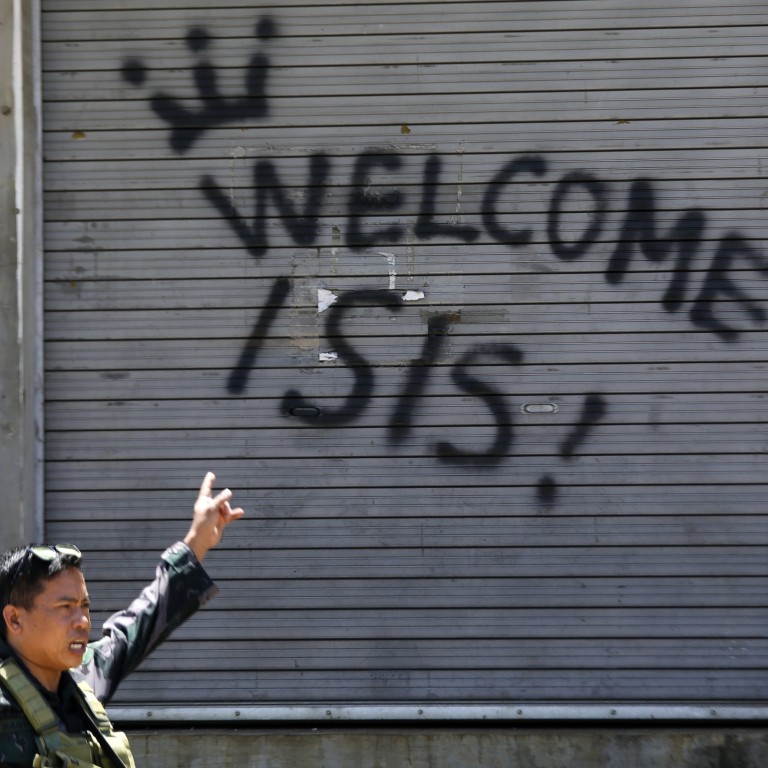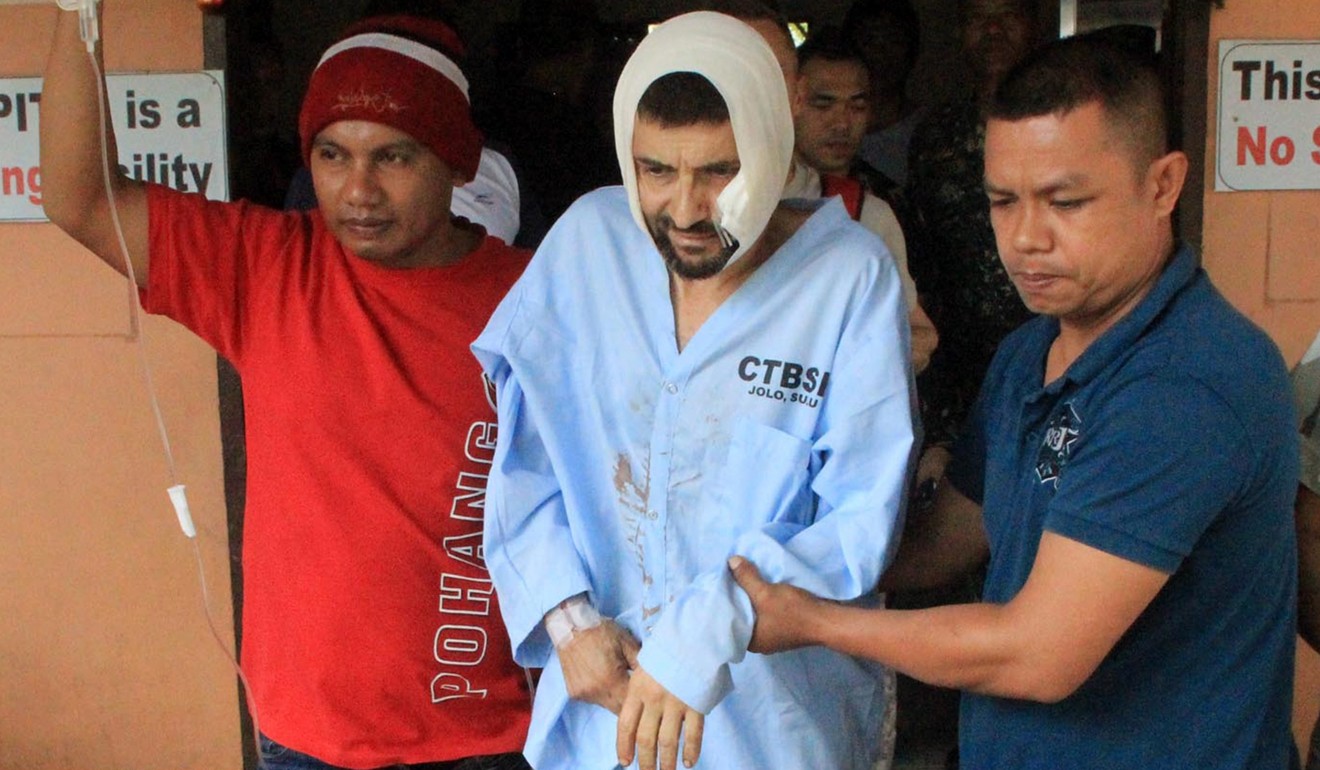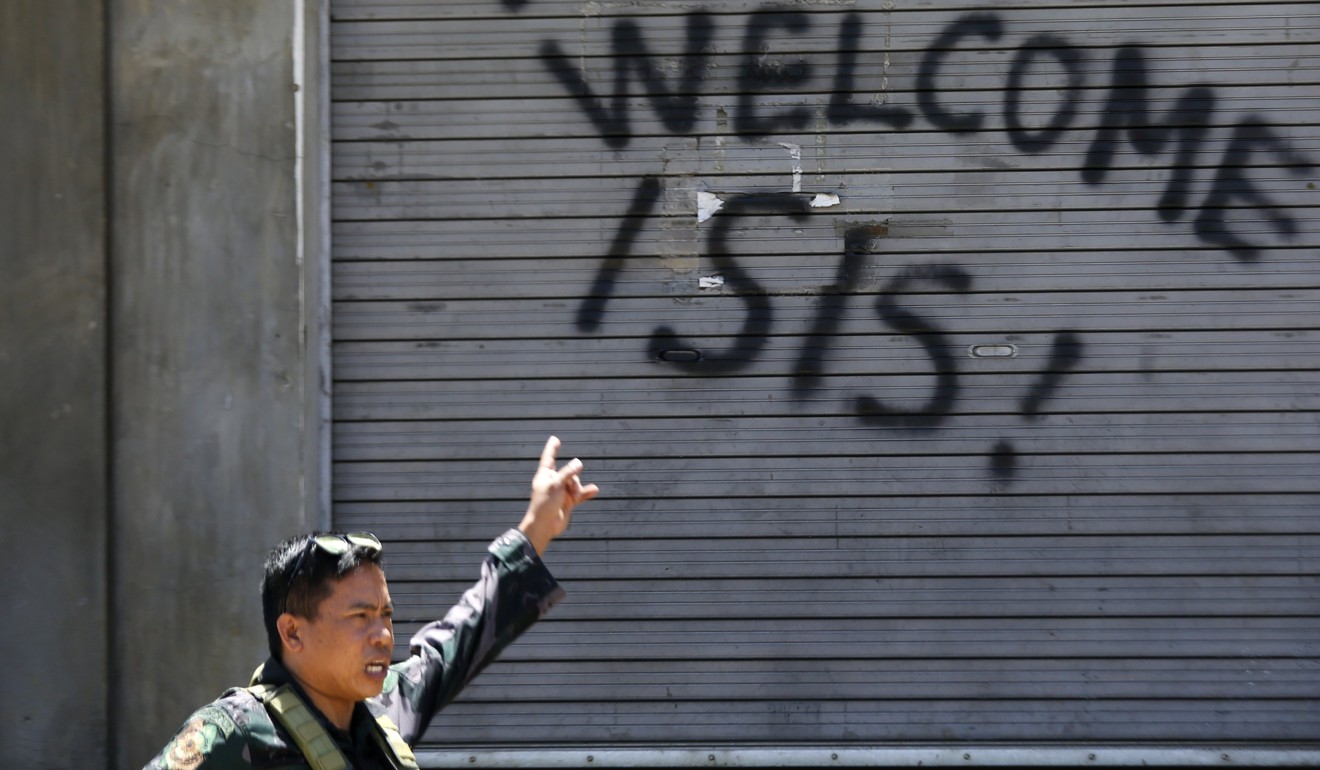
Arrests of six suspects with Abu Sayyaf in Philippines fuel fears over spread of militancy
- Raids on terrorist hideouts result in detention of suspects linked to kidnappings, ambushes, bomb attacks and recruitment
- Security forces have stepped up their presence in the restive south after the killing of a Dutch hostage last month
On Tuesday the Philippine National Bureau of Investigation (NBI) presented six members of the group to the media – two captured in Taguig, one in Bataan, and three in the city of Zamboanga.
NBI spokesman Ferdinand Lavin said the six were suspected of involvement in kidnapping, ambushes, bomb attacks and recruitment.
Five were behind the kidnap of 50 workers from a plantation at Tam-Awan in Basilan province back in 2001, Lavin said, while the sixth detainee allegedly took part in the abduction of Jehovah’s Witnesses in Sulu province’s Patikul in 2002.
Militants kill Dutch photographer in Philippines
In April police also arrested an Abu Sayyaf member working as a security guard in Metro Manila, far from the centre of unrest in the south. Aldemar Murih Saiyari was accused of kidnapping and had been employed as a guard using a fake licence.
Regional military spokesman Colonel Gerry Besana said “militants were exploiting poverty and using offers of money and scholarship grants to radicalise and recruit new members”.
The detainees presented on Tuesday were named as Azmier Maalum, Amar Assan, Musa Tahil Sampang, Jamil Ibrahim, Yong Aming, and Majuk Tahil Amil.

“He is a reliable boat man. Their fighters were decreasing so they had to recruit more for Mindanao,” NBI spokesman Lavin said.
Visitors from Malaysia, Indonesia attacked by Philippine rebels
Founded in the early 1990s, Abu Sayyaf has carried out a number of kidnappings, bombings and beheadings in the southern Philippines over the past decade.

Their Filipino guide, Ivan Sarenas, escaped. Vinciguerra successfully fled in December 2014 using a jungle knife with which he killed a guard. He was later recovered by government security forces.
Marawi was devastated by fight against Isis. Now painfully slow recovery fuels resentment
Academic Ramon Beleno III, head of political science and history at Ateneo de Davao University, said reports of militants recruiting new fighters in urban centres such as Manila were worrying and could increase their capacity to launch attacks.
“This is a cause for concern since security guards are our frontline defence – at railway stations, airports and bus depots,” Beleno said. “The police need to intensify their intelligence operations.”

The number of hostages currently being held by Abu Sayyaf is unclear. The military says there is none but the Philippine National Police claim two Vietnamese and four Filipinos remain unaccounted for.
The military deployed a battalion to Sulu last week in pursuit of Abu Sayyaf, bringing the number of troops in the province to more than 10,000.
Islamic State group claims Philippines church bombing
The terrorist organisation continues to be a problem for Malaysia as well, with authorities there saying the threat remains high. Police inspector general Seri Abdul Hamid Bador has said Sabah’s proximity to the Philippines leaves it vulnerable, with Sulu only a 15-minute boat ride away.
